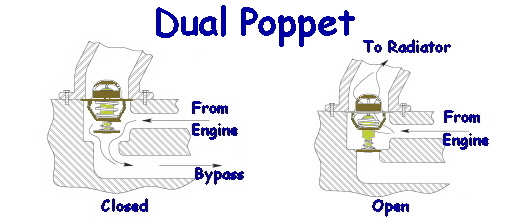Good morning. In response to Alfadriver:
I am not arguing your points, but want to be clear that the people that I quoted are not "internet engineers" second guessing Porsche.
I selected quotes from actual engineers who have been working with the particular engines that Robbie was asking about. I was trying to be helpful by passing on pertinent info to specifically answer his question. I did not intend to prove a point or show people that I was smarter than anyone.
I doubt that most people care to read it, but here's some clips of info on their backgrounds:
Wayne R. Dempsey:
Wayne Dempsey co-founded Pelican Parts in 1997 as a result of his own passion for Porsche. His first exposure to a 914 came though the father of one of his close friends. After driving the 914 around the hills of upstate New York, he decided he wanted one for himself! So upon his arrival in California, Wayne picked up his black 1974 914 Roadster before he had even found an apartment. He definitely knew his priorities! Originally from Long Island, Wayne spent 5 years in Boston where he received his undergraduate and master’s degree from MIT (Massachusetts Institute of Technology) in Mechanical Engineering. While at MIT, Wayne designed and implemented a fail-safe four point latching system for the gull-wing doors on the commuter car Aztec as part of MIT’s Solar Electric Vehicle Racing Team. He also single-handedly designed, constructed, programmed and tested a fully functioning PC-controlled assembly module for manufacturing connectors.
Charles Navarro:
Charles Navarro co-founded LN Engineering LLC while studying Computer Science at Northwestern University in 2002 along with his wife, Tammy Hellings, also a graduate of Northwestern with a degree in Chemical Engineering and MBA from Olivet Nazarene University. LN Engineering formed a niche business, previously non-existent for precision performance aftermarket engine components specifically targeted toward addressing known issues and improving upon original equipment engine components for Volkswagen and Porsche vehicles. LN Engineering is best known for its trademark Nickies air-cooled cylinders.
Originally focused solely on research and development on legacy air-cooled models LN Engineering continued to expand the business to include water-cooled Boxster, Cayman, and 911 models beginning with the M96 and later M97 engines utilized through 2008. Ever since then, providing products and solutions for these newer water-cooled engines has become an area of intense focus and development leading to the Nickies aluminum engine block sleeving process where failed blocks could be repaired rather than be replaced, while allowing for increased displacement as well as improved cooling and reliability. ….
Jake Raby:
In 1997, Jake Raby founded Raby Engine Development (RED) specializing in building,
modifying, and customizing performance engines and engine parts for Porsche
automobiles. In 2007, the Flat 6 Innovations division was created, specializing in the
modern, watercooled Porsche™ M96 “flat six” engine development. Having identified
many areas of weakness within the Porsche M96 engine; and noting that others were
not developing fixes for them, Flat 6 Innovations and LN Engineering coupled to
engineer components and processes to overcome the inherent deficiencies. Jake was
the first to install an IMS Retrofit bearing into a Porsche M96 engine and worked to
perfect the processes and tooling to make the IMS Retrofit a common practice today.
Jake’s most recent development, the IMS Guardian™ (premiered in the November,
2011 issue of Excellence Magazine,) is the first advanced monitoring system for
imminent engine failure. Coupled with their IMS RetroFit Kit, the first kit designed to
replace a faulty Intermediate Shaft (IMS) bearing, a relatively common cause of
catastrophic engine failure in the M96 engine, Jake pioneered solutions never before
available to keep these engines on the road. Jake has completed instructional engine
rebuild videos as well as offering the “M96 101 Engine Rebuild School, a 3 day
comprehensive, hands on engine assembly class with a focus on M96 engine
assembly and he is currently writing the book on M96 engine assembly. The Aircooled
Technology division of RED specializes in the Aircooled engine used most widely in
the Porsche™ 914, and a new division has been created to focus on Subaru EJ series
engines. Located in Cleveland, GA, Raby Engine Development, and their well
respected, certified RED Line products, are shipped and driven around the globe.
I do not know details about JFP in PA, but he does own a reputable Porsche shop, is a senior moderator on Renntech.org and has a reputation for providing simple, technically correct information to anyone who asks for help without getting into a 'pissing contest'. I remember reading somewhere that he came from an engineering background before owning the shop.
![]()


































